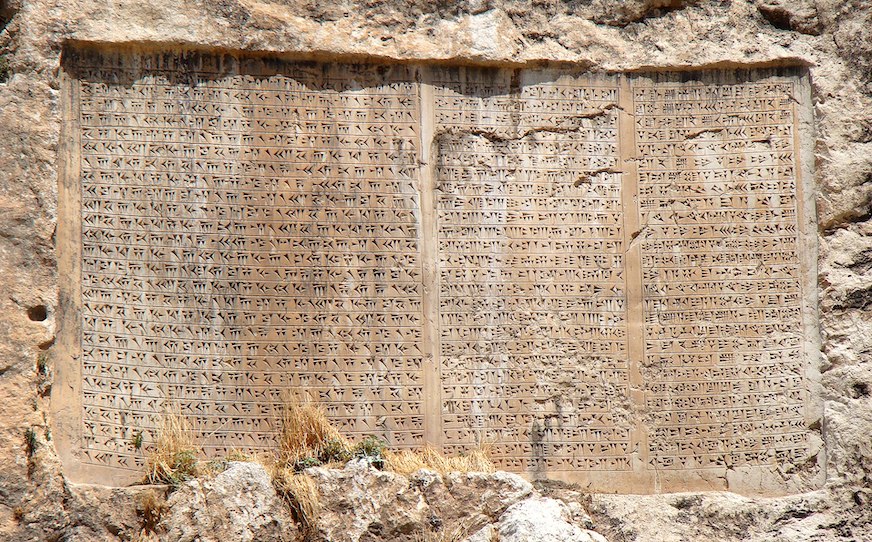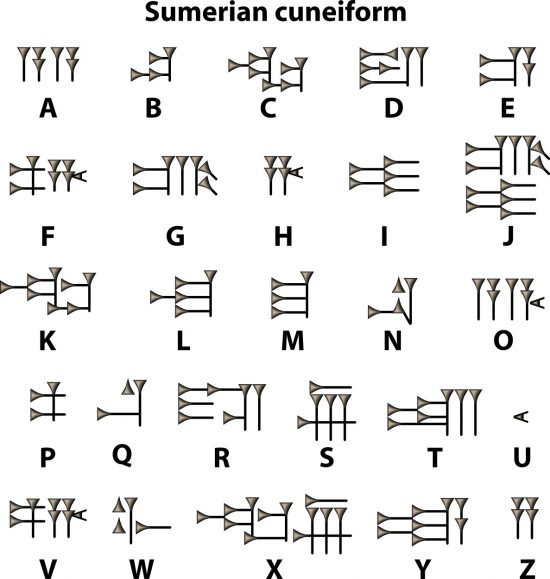The Voice of God
“…Ask now about the former days, long before your time, from the day God created human beings on the earth; ask from one end of the heavens to the other. Has anything so great as this ever happened, or has anything like it ever been heard of? Has any other people heard the voice of God speaking out of fire, as you have, and lived? Has any god ever tried to take for himself one nation out of another nation, by trials, by signs and wonders, by war, by a mighty hand and an outstretched arm, or by great and awesome deeds, like all the things the Lord your God did for you in Egypt before your very eyes…? Deuteronomy 4:32-34.
“God spoke to His firstborn son with an audible voice.”
God spoke to His firstborn son with an audible voice. Just as He spoke to Abram when He told him: “…The Lord had said to Abram, “Go from your country, your people and your father’s household to the land I will show you. “I will make you into a great nation, and I will bless you; I will make your name great, and you will be a blessing. I will bless those who bless you, and whoever curses you I will curse; and all peoples on earth will be blessed through [or: in] you…”
A beautiful story about God speaking with an audible voice one can find in 1 Samuel 3:1-10. “…The boy Samuel ministered before the Lord under Eli. In those days the word of the Lord was rare; there were not many visions. One night Eli, whose eyes were becoming so weak that he could barely see, was lying down in his usual place. The lamp of God had not yet gone out, and Samuel was lying down in the house of the Lord, where the Ark of God was. Then the Lord called Samuel. Samuel answered, “Here I am.” And he ran to Eli and said, “Here I am; you called me.” But Eli said, “I did not call; go back and lie down.” So, he went and lay down. Again, the Lord called, “Samuel!” And Samuel got up and went to Eli and said, “Here I am; you called me.” “My son,” Eli said, “I did not call; go back and lie down.” Now Samuel did not yet know the Lord: The word of the Lord had not yet been revealed to him. A third time the Lord called, “Samuel!” And Samuel got up and went to Eli and said, “Here I am; you called me.” Then Eli realized that the Lord was calling the boy. So, Eli told Samuel, “Go and lie down, and if he calls you, say, ‘Speak, Lord, for your servant is listening.’” So, Samuel went and lay down in his place. The Lord came and stood there, calling as at the other times, “Samuel! Samuel!” Then Samuel said, “Speak, for your servant is listening…”
Then the Lord reveals to Samuel what will happen to this priest Eli and his corrupt sons.
“… Samuel lay down until morning and then opened the doors of the house of the Lord. He was afraid to tell Eli the vision, but Eli called him and said, “Samuel, my son.” Samuel answered, “Here I am.” “What was it he said to you?” Eli asked. “Do not hide it from me. May God deal with you, be it ever so severely, if you hide from me anything he told you.” So, Samuel told him everything, hiding nothing from him. Then Eli said, “He is the Lord; let him do what is good in His eyes.” The Lord was with Samuel as he grew up, and He let none of Samuel’s words fall to the ground. And all Israel from Dan to Beersheba recognized that Samuel was attested as a prophet of the Lord…” 1 Samuel 3:15-20.
Higher Bible Criticism claimed that the text of the Bible was written much later in time than the events that it describes happened. This type of Bible criticism claims that the written text in our bibles is of a very late date and is based on oral traditions during many centuries.
However, ‘writing’ originated very early in history. Although the earliest findings of Hebrew letters of the alphabet go back to the 8th century B.C. For instance, the Siloam inscription was found in Paleo-Hebrew in King Hezekiah’s Siloam tunnel, which brings water from the Gihon Spring to the Pool of Siloam, located in the City of David in the East Jerusalem neighborhood of Shiloah or Silwān. Yet, much earlier ‘Proto-Sinaitic’ inscriptions were found dating back to between the 15th and 17th centuries B.C. These inscriptions are considered to be the ancestor of the Phoenician or Paleo-Hebrew script, derived from Egyptian hieroglyphs or Akkadian cuneiform letters. The language of the inscriptions is Semitic.
So writing was common in the days of Moses (around 1500 B. C.) and even in the days of Abraham, around 2000 B. C. Writing was even common in the centuries before their time, 3500-3000 B. C. – and for that matter also in the days of Noah and even of Adam. Of course, the Hebrew and Aramaic language and its letters, and the Greek language and its letters that we find in the source texts of the Scriptures in our Bibles today, are of a much later date than the languages and letters of the 14th or the 20th century B.C. Between half a million and two million cuneiform tablets are estimated to have been excavated in modern times, of which only approximately 30,000–100,000 have been read or published.
Personally, I have been filming the finding of the clay-tablet library of Ebla. The Ebla tablets are a collection of as many as 1,800 complete clay tablets, 4,700 fragments, and many thousands of minor chips found in the palace archives of the ancient city of Ebla, Syria. The tablets were discovered by Italian archaeologist Paolo Matthiae and his team in 1974–75 during their excavations at the ancient city at Tell Mardikh. The tablets, which were found in situ on collapsed shelves, retained many of their contemporary clay tags to help reference them. They all date to the period between c. 2500 B.C. [so long before the days of Abraham] and the destruction of the city around 2250 BC. Today, the tablets are held in museums in the Syrian cities of Aleppo, Damascus, and Idlib.
When you write down the things that you ‘saw and heard’ the reliability and the truthfulness of the words and reliability of the historic events that you read about today in the Bible is much greater than if they were delivered by oral – mouth to mouth – traditions. Orally transferred traditions will change gradually their content over the years and centuries. In the Bible (NASB) 77 times one finds the word ‘write’, and 251 times the word ‘written’.
God spoke with an audible voice to His firstborn and chosen son, the people of Israel. What He said was written down by those who wrote the 66 books of the Bible.
We read in Genesis 11:1 the record of the building of the tower of Babel/Babylon. About language and words spoken then, it says that “…the whole earth used the same language and the same words…” (NASB) “…Now the whole earth had one language and one speech…” (NKJV). That was the situation with mankind before and just after the Flood.
Those words of that ‘one language’ surely were not yet the Hebrew or Aramaic or Greek languages of the books of the Bible. And also not yet written in Hebrew or Greek letters. Those languages – and many others as well – developed later. And the letters, in which the words of these languages were recorded, changed and developed as well in the many centuries to come.
So, languages and types of writing developed in the centuries after the Flood of Noah and the Tower of Babel when mankind spread around the world and developed various types of civilization. Writing was done on clay tablets in Mesopotamia and on papyrus in Egypt. Also chiseled in the rocks of mountains. Even marks on rocks, leaves, clay, bark, metal and paper. Could Shem have been the link between the pre-Flood civilization and the new world after the Flood? Noah had 3 sons who were in the Ark together with their wives: Shem, Ham and Japheth. They are the forefathers of the new mankind after the Flood. After the Tower of Babel mankind spread out, gradually over the whole world. Abraham was in the line of Shem, the Semitic people. In Genesis 11:10-26 we find this genealogy: Shem – Arphaxad – Shelah – Eber – Peleg – Reu – Serug – Nahor – Terah – Abram.
Shem probably was still alive in the days of Abram. Could he have transferred the family history written on clay tablets to Abram? And did this knowledge find its way later through Isaac, Jacob and his sons? They ended up living in Egypt for 400 years or more. One of the sons of Jacob by the name of Joseph found himself later to be almost all powerful in Egypt. There Moses was born and raised. Did he discover these old traditions? Who can tell!
“There are roughly 6,500 spoken languages today in the world.”
There are roughly 6,500 spoken languages today in the world. However, about 2,000 of those languages have fewer than 1,000 people who speak such a language. And about 100 writing systems, alphabets! Cuneiform is the oldest system of writing, developed by the ancient Sumerians of Mesopotamia, going back to 3500-3000 BC, some say. A little older than the hieroglyphs of Egypt, but almost simultaneous.
Probably the most ancient historic events of the Bible were recorded and written on clay tablets. Some claim that one finds a clay-tablet-structure in the book of Genesis. Later Moses edited these age-old traditions written on clay tablets, and thus the book of Genesis, edited and compiled by Moses, became the first of the ‘5 books of Moses’. The 5 books of Moses are: Genesis, Exodus, Leviticus, Numbers and Deuteronomy.
Written correspondence between Egypt and the Sumerian culture took place by people who could read and write both in Egyptian hieroglyphics as well as in Sumerian cuneiform writing. Moses, born 64 years after Joseph, was versed in all the wisdom of the Egyptians. He probably could read and write the hieroglyphs as well as the cuneiform. Moses being the editor/compiler of the ancient recordings in the Book of Genesis, and probably the writer of the last 14 chapters of the Book of Genesis, using a written record by Joseph himself, because of the many purely Egyptian words and expressions one finds in it.
“God spoke with an audible voice. People wrote it down.”
God spoke with an audible voice. People wrote it down. And recorded in written form the historic events they went through in their days. So, we can read it and ponder upon it. We can listen to the voice of God and look at the work of His hands in history – past, present and future.
Moses said to Israel: “…You were shown these things so that you might know that the Lord is God; besides Him there is no other. From Heaven He made you hear His voice to discipline you. On earth He showed you His great fire, and you heard His words from out of the fire. Because He loved your ancestors and chose their descendants after them, He brought you out of Egypt by His Presence and His great strength, to drive out before you nations greater and stronger than you and to bring you into their land to give it to you for your inheritance, as it is today…” Deuteronomy 4:35-39.







